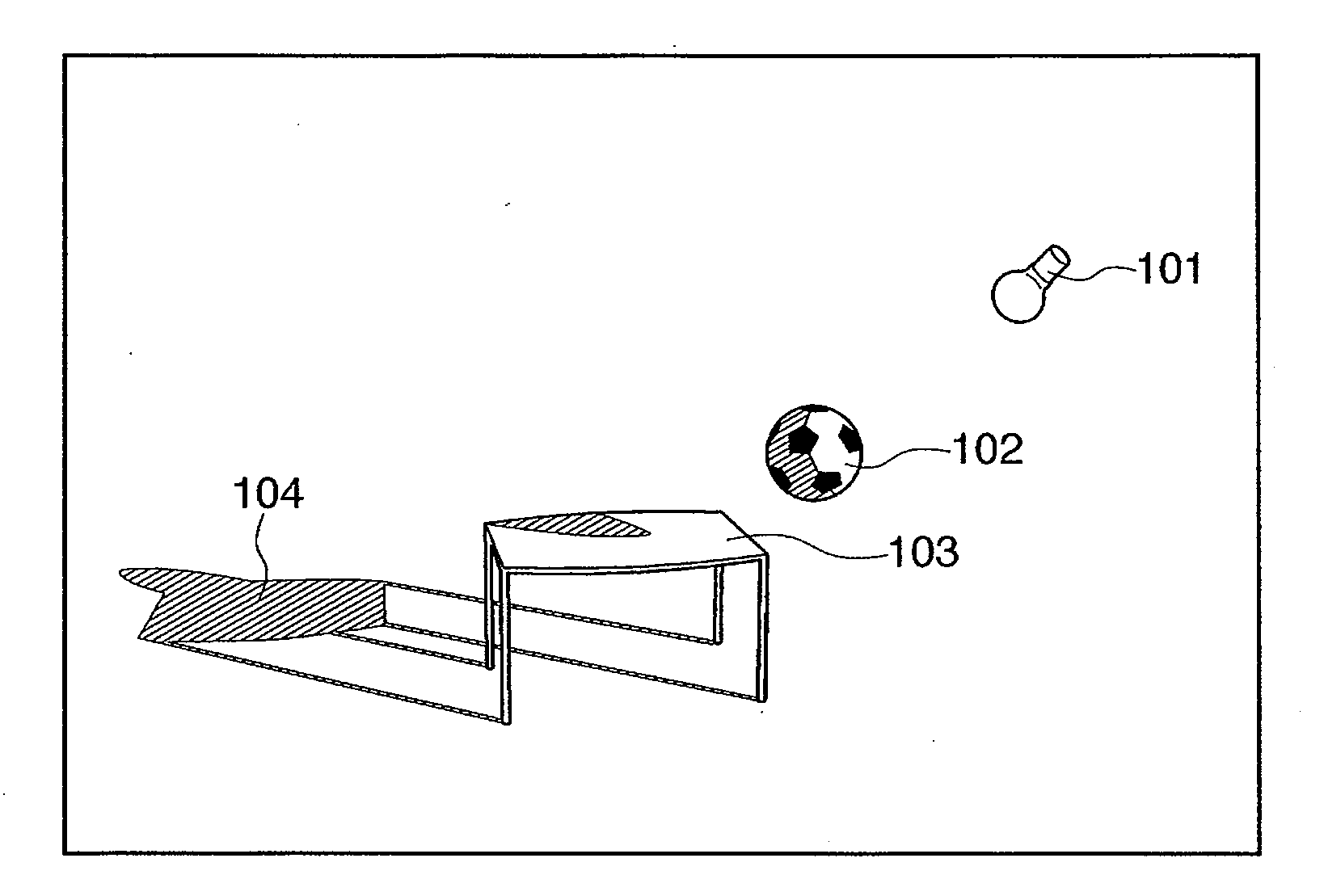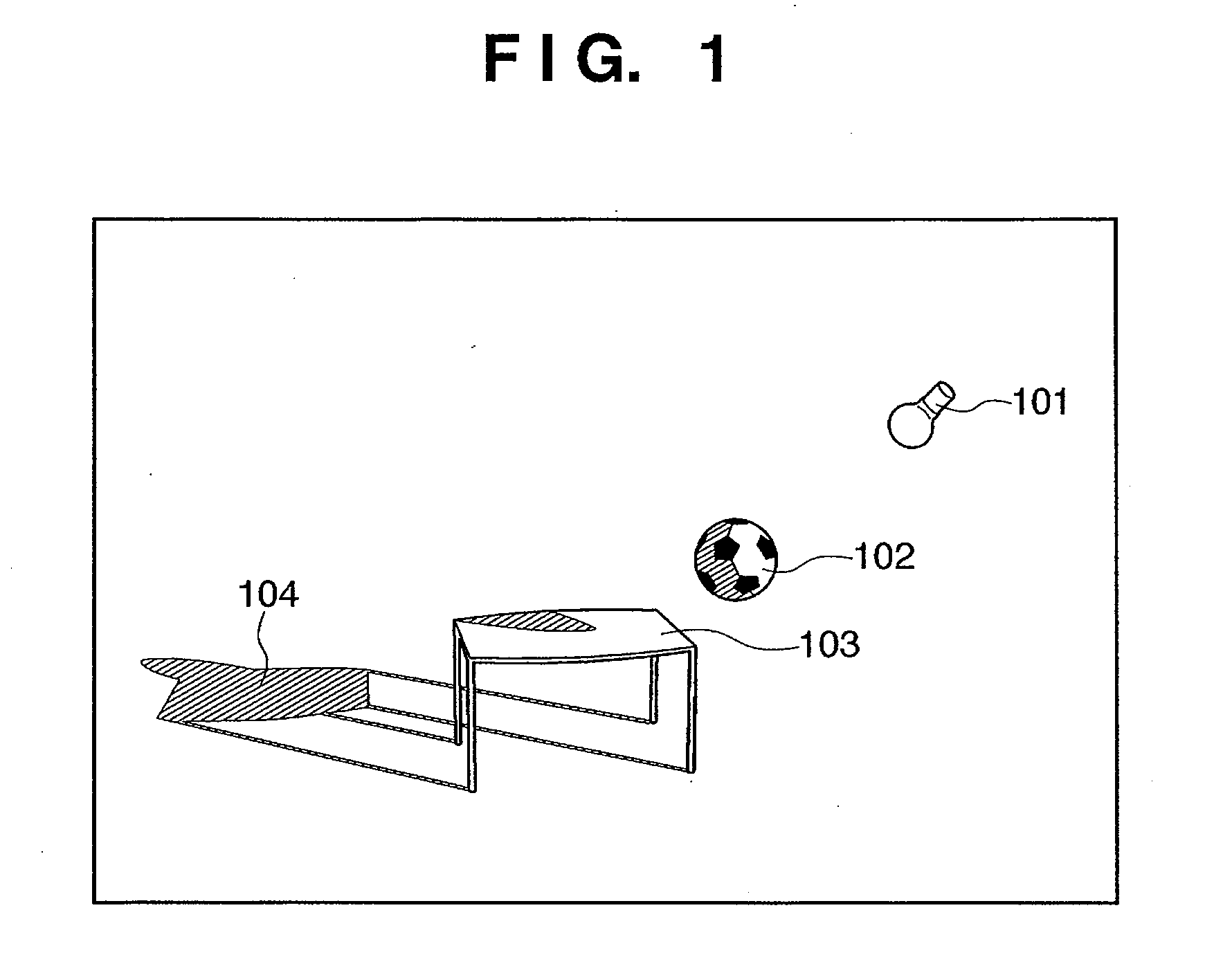Image processing apparatus and method of controlling operation of same
a technology of image processing and apparatus, applied in the field of image processing apparatus, can solve the problems of large computation load, increased computation load, and large computation load of collision check technique, and achieve the effect of high speed
- Summary
- Abstract
- Description
- Claims
- Application Information
AI Technical Summary
Benefits of technology
Problems solved by technology
Method used
Image
Examples
first embodiment
[0038]A virtual-space presentation apparatus according to a first embodiment of the present invention shares results of rendering in processing for generating virtual shadow information in a shadow-casting function and processing for interference detection in a collision check function. By virtue of such sharing, it is possible to efficiently execute the processing involved in collision check applied to three-dimensional virtual objects in three-dimensional virtual space and the processing involved in the rendering of virtual shadows of these three-dimensional virtual objects. In the description given below, it is assumed that “model data” expresses a three-dimensional virtual object in virtual space.
[0039]FIG. 1 illustrates an example of virtual space generated by the present system. An overview of the first embodiment will be described with reference to FIG. 1.
[0040]A virtual light source 101 in virtual space is shown in FIG. 1. Model data (virtual objects) 102 and 103 have been o...
second embodiment
[0079]In the first embodiment, interference detection is applied to rendered model data or a rendered bounding volume (a bounded volume created prior to rendering). In this case, if use is made of a bounded volume created prior to rendering, the processing for interference detection can be executed at higher speed but the shape of the virtual shadow that will be produced will be the shape of the bounded volume. Accordingly, in a second embodiment, a bounded volume is calculated, in order to perform interference detection, from the result of rendering model data, and interference detection is carried out using this bounded volume. Processing according to the second embodiment is capable of being implemented by adding processing, which is for creating the bounded volume from model data, to the processing for interference detection in steps S503 and S505 in the first embodiment.
[0080]In accordance with the second embodiment, shape information in the form of the model data as is can be ...
third embodiment
[0081]In the first embodiment, processing for interference detection is executed using results of rendering from the positions of a plurality of viewpoints. In a third embodiment, processing for interference detection and processing for generating virtual shadow information is executed using only one rendering result from the viewpoint of the virtual light source.
[0082]The third embodiment differs from the first embodiment in the processing executed in steps S503 to S506. In the third embodiment, the processing of steps S504 and S505 is eliminated and therefore only the processing of steps S503 and S506 will be described below.
[0083]In step S503, the positional relationship determination unit 203 executes interference detection using the result of rendering performed in step S501. In other words, whether or not the objects are overlapping each other as seen from the viewpoint of the virtual light source is determined, as described above in conjunction with FIG. 6A.
[0084]The processi...
PUM
 Login to View More
Login to View More Abstract
Description
Claims
Application Information
 Login to View More
Login to View More - R&D
- Intellectual Property
- Life Sciences
- Materials
- Tech Scout
- Unparalleled Data Quality
- Higher Quality Content
- 60% Fewer Hallucinations
Browse by: Latest US Patents, China's latest patents, Technical Efficacy Thesaurus, Application Domain, Technology Topic, Popular Technical Reports.
© 2025 PatSnap. All rights reserved.Legal|Privacy policy|Modern Slavery Act Transparency Statement|Sitemap|About US| Contact US: help@patsnap.com



